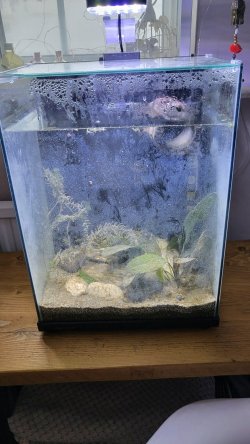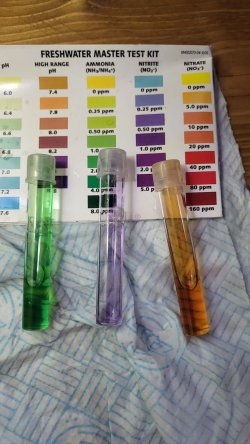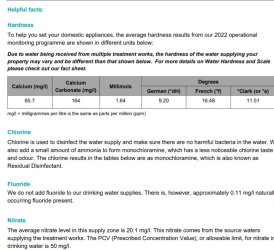The cycling article hear clearly states the following:
I wrote the above and I really should have clarified it a tad more. Flake fish food is about the worst thing one can use for cycling. Here is what the scientist who discovered what were the actual bacteria at work in tanks in terms of cycling wrote on the topic. The bolding and italics are added by me.
Next, Api does not contain the right bacteria. Most products do not because the Nitrospira which deal with nitrite (and have been diccovered to also process ammonia straight to nitrate) are protected by a patent shared by the above author and Tetra (as a subsidiary whithin the pet division of a large conglomerate). So if you want to use bottle bacteria to accellerate a cycle you really need to use either Dr. Tim's One and Only (the variety for FW tanks) or els Tetra SafeStart or SafeStart Plus. Another method is to take things from an established tank and the bacteria on them to jump start a cycle. The problem with this is that there can also be nasties included which can be unwanted for sure. You need to know the bacteria came from a healthy system.
You can buy ammonium chloride to use forfishless cycling/ One Product is offered by Dr. Tim and another by Fritz Aquatics and is called Fishless Fuel. They should both be available from Amazon.
If you use them bear in mind they measure ammonia using a different scale than most hobby tests. So when they tell you X amount will produce Y ppm of ammonia, you need to myltiply that Y number by 1.28. This converts it to eaual the method most of out test use. So when you flow the directions for either product they tell you that
To bring aquarium to 2 ppm ammonia:
Add 4 drops per One U.S. Gallon (3.78 L) or 1 tsp (5 ml) per 25 U.S. Gallons (94.6 L)
The above directions are from Fritz, but the ones from Dr. Tim are the same. However, you will test after adding the ammonium chloride and should actually see 2 x 1.28 or about 2.56 ppm. The amount of ammonia should not exceed 5 ppm according to both sources when using their test scale. But for us that number is actually 5 x 1.28 = 6.4 ppm. You should never get close to that, the max you need to cycle any tank is basically 3 ppm on your kit. If one plans to stock lightly, then a lesser concentration of ammonia can be used.
So you can cycle using their 2 ppm aka your 2.56 ppm. However the fishless cycling instructions here are based on 3 ppm. If you want to stick with them you need to add a bit more than 4 drops/gal. You would need to add 4.8 drops/gal. It will be a lot easier to calculate the total drops needed using this 4.8 number after you multiply the volume of any tank.. You did not post the volume of your tank. So I will use an example.
For a start tanks do not actually hold the amount of water that matches the tank size as advertised. There are several reasons for this. First we never fill the tank to the almost overflowing point, we leave space at the top. Next, every thing we put into the tank means it will hold less water, So substrate, rocks, wood and other decorations mean your tank holds lees than advertised. I ussgest one assume the average tank hold about 85% of its advertised size. It you are going with no substrate you can use 90%.
So use the adjusted volume to determine how much ammonia to add. if your tank is 20 gals and has substrate and some decor it read holds more like 20 x .85 =17 gals. So you would multiply that 17 by the 4.8 above and you would need to add 81.6 drop. 87 would be fine. However, counting drops that high is a PITA. I know that for the Dr. Tim's 1 ml of the ammonium chloride will produce the 2/2.56 ppm when added to 20 gallons (so Fritz should be the same). I would use a whole ml on 17 and figure it gets me close enough to 3 ppm for the directions here to be OK.
As you can see it is a lot easier to add 81.6 and rounding it up that tiny bit to 82 that trying to dose 4.8 drops a bunch of times. You can get something that measures in ml from any drugstore. It is usually a baby dosing syringe (no needle included). I buy disposable pipettes in 1 ml and 3 ml sizes by the box of 200. The caost a few cents each. But I go through them and also give a way 3 of each size and a candy cane to all the members of my fish club who attend our Xmas dinner meeting.






 I just need to be patient clearly and let nature do its thing now.
I just need to be patient clearly and let nature do its thing now.